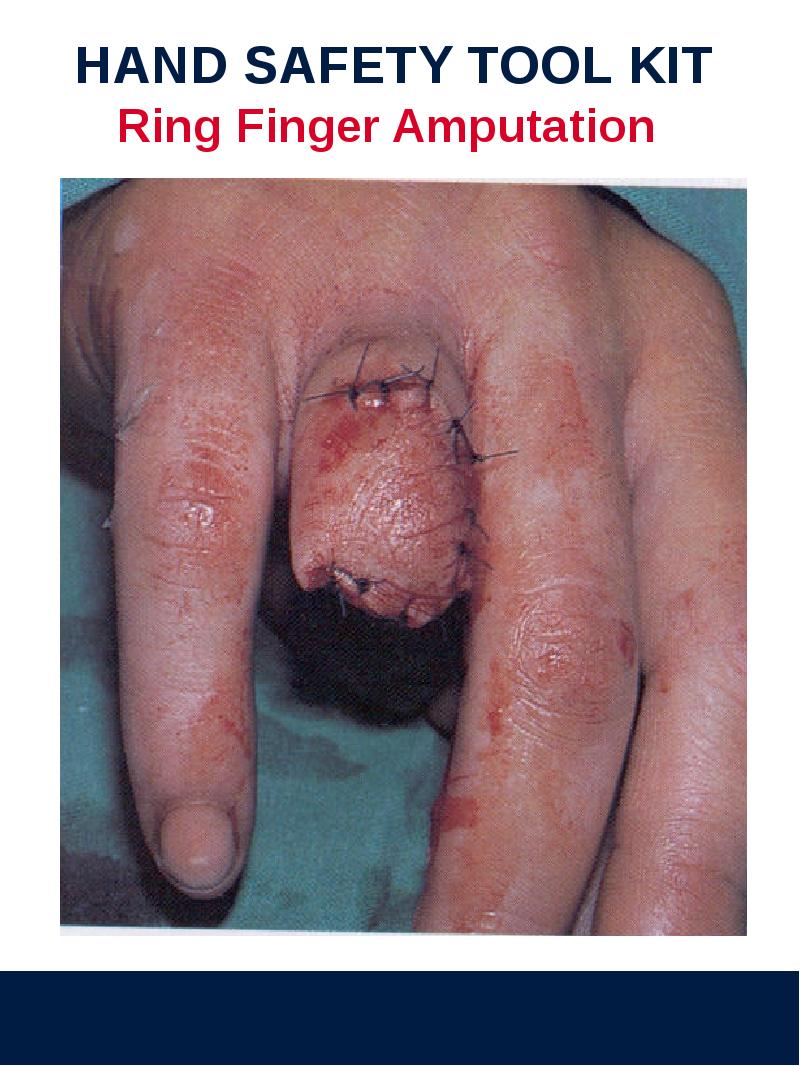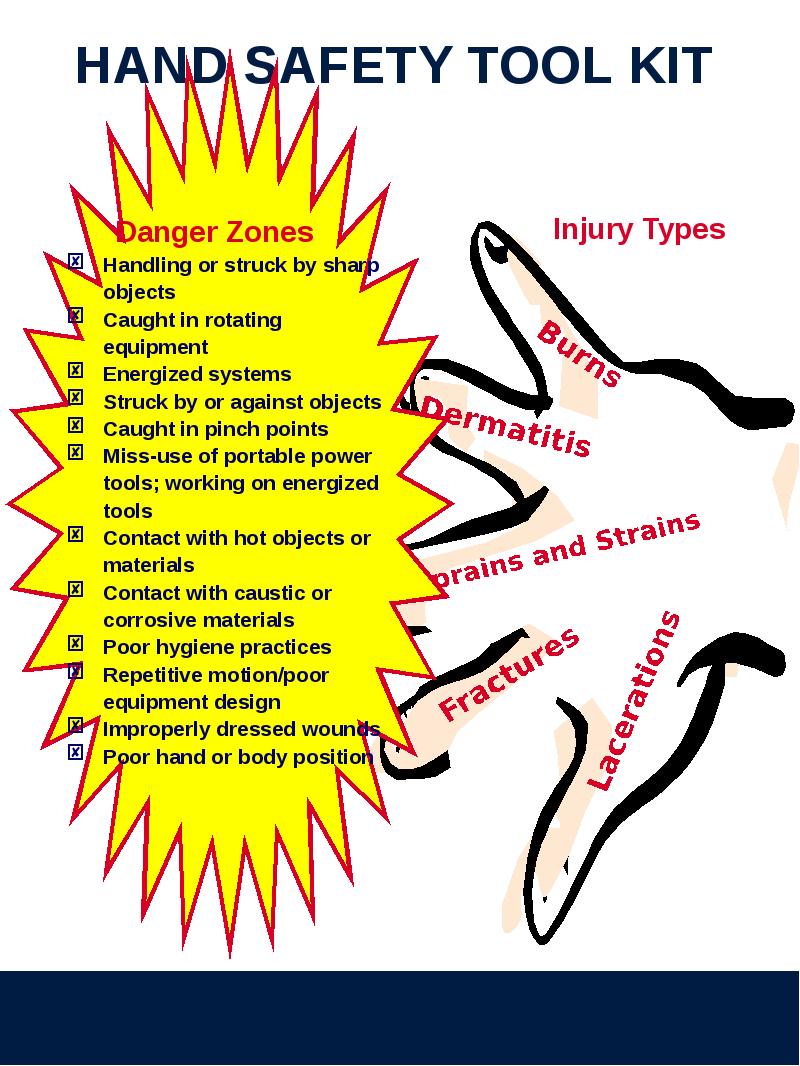Hand safety. Tool kit презентация
Содержание
- 2. Guide for Supervisors: Guide for Supervisors: What hazards to the hands
- 3. Toolbox Talk No 1 Toolbox Talk No 1 Five Toolbox Talks,
- 4. Cut or punctured by sharp objects Burned by hot objects
- 8. As you can tell, all these injuries occurred during normal, everyday
- 13. Thermal and chemical contact hand injuries, along with the other types
- 16. Chemicals and hot surfaces or materials are the greatest
- 17. Below are examples of safe working practices relative to the
- 18. Consider what can we do to protect our hands from injuries
- 21. How do we protect our hands from stored energy How do
- 22. Toolbox Talk No 4 (cont’d) Toolbox Talk No 4 (cont’d) Consider
- 23. Take a brief moment to look at your hands: Take a
- 25. In this industry we have sustained many injuries involving pinch points
- 28. Скачать презентацию



























Слайды и текст этой презентации
Похожие презентации





























